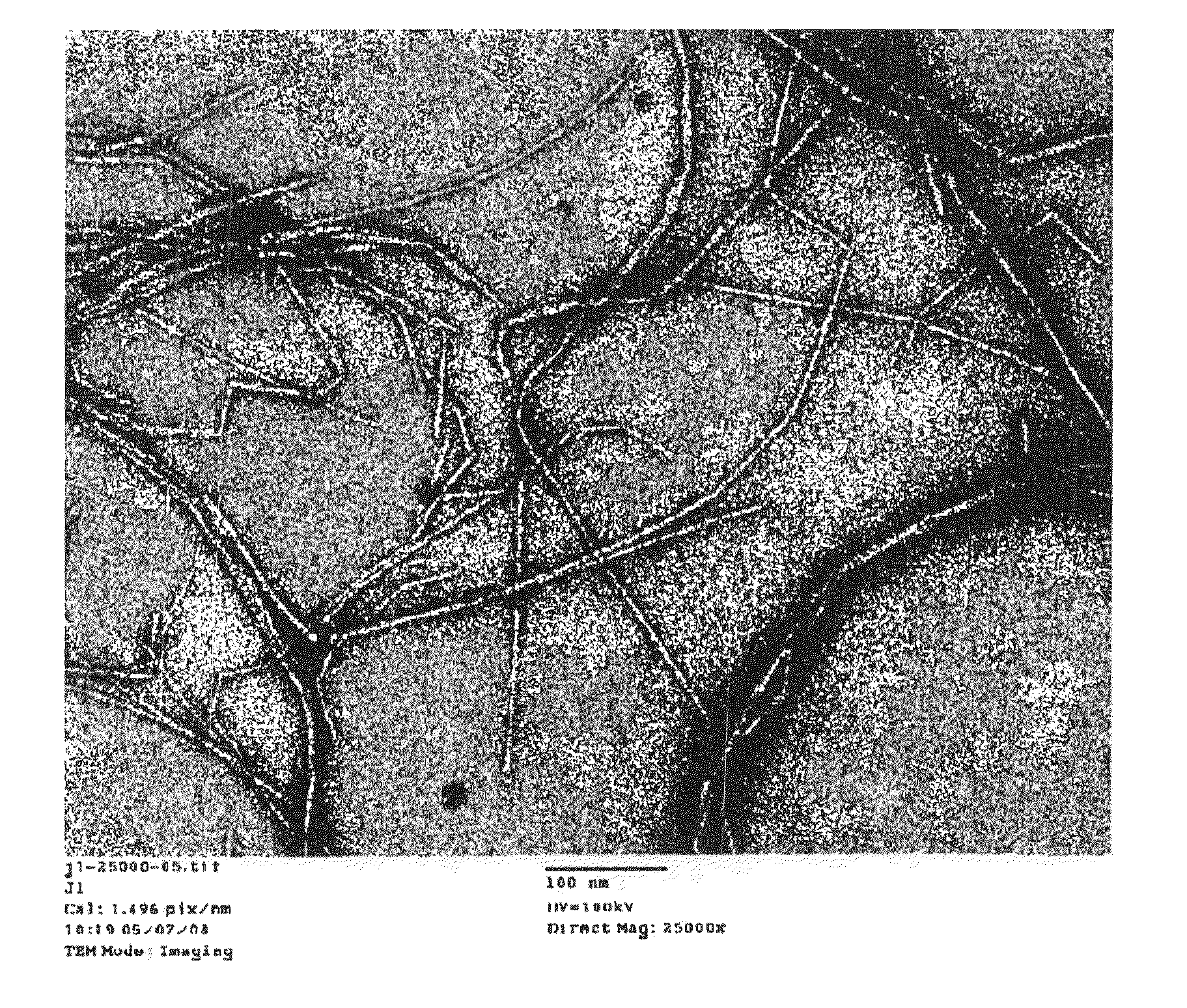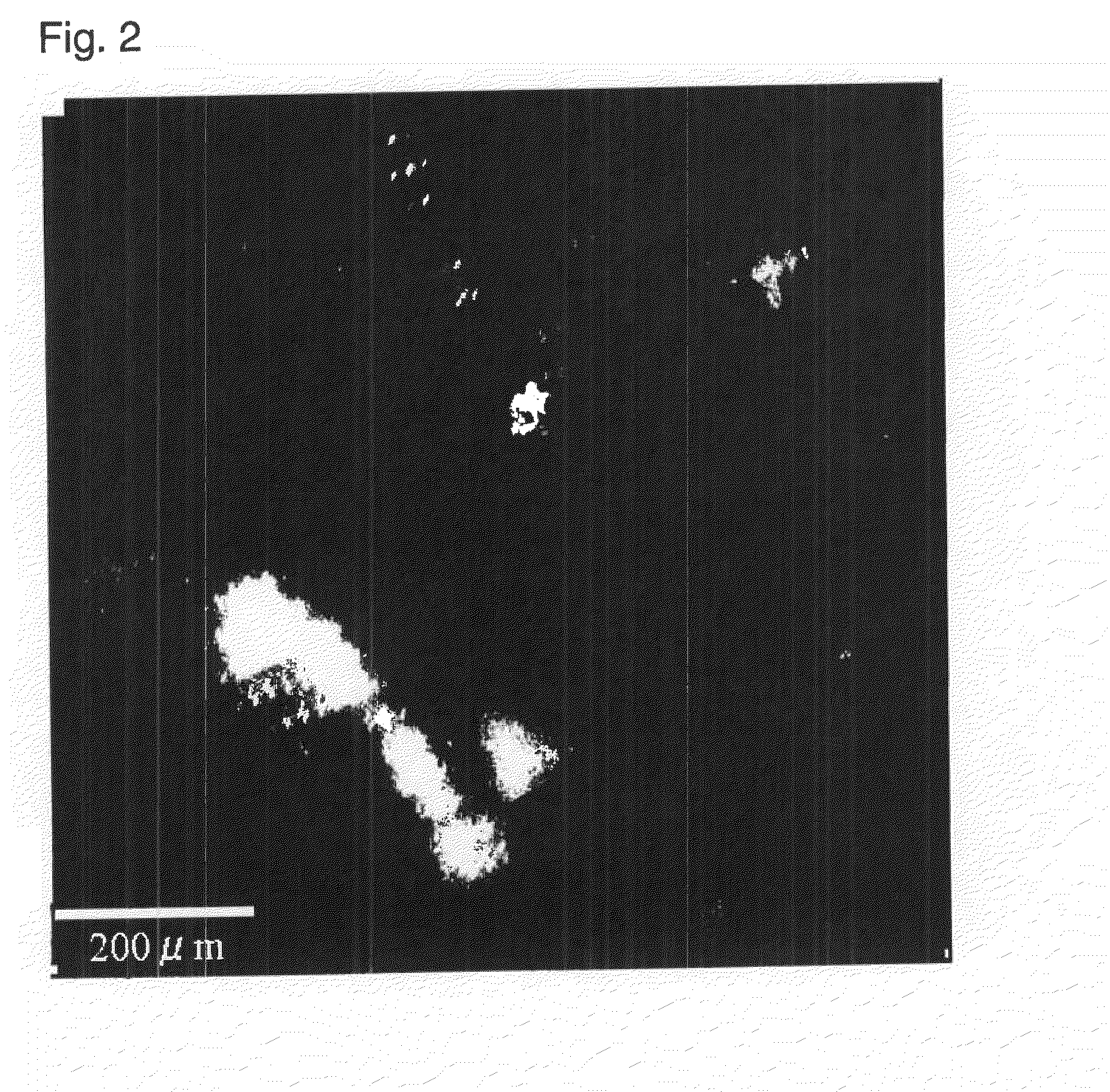Fiber composite
a fiber composite and composite material technology, applied in mechanical vibration separation, other chemical processes, instruments, etc., to achieve the effects of low water absorption, low coefficient of linear thermal expansion, and high transparency
- Summary
- Abstract
- Description
- Claims
- Application Information
AI Technical Summary
Benefits of technology
Problems solved by technology
Method used
Image
Examples
preparation example 1
Preparation of Cellulose Dispersion
[0352]Douglas fir (Oregon pine) wood powder (manufactured by Miyashita Co., Ltd.) having an average maximum length of 250 μm and an average minimum length of 50 μm was degreased at 80° C. with a 2 wt % sodium carbonate aqueous solution. The degreased wood powder was washed with demineralized water and then immersed in an aqueous solution containing 0.66 wt % of sodium chlorite and 0.14 wt % of acetic acid, at 80° C. for 5 hours, to remove lignin. The obtained product was washed with demineralized water and then subjected to filtration, and the recovered refined cellulose was washed with demineralized water and then immersed in a 5 wt % potassium hydroxide aqueous solution for 16 hours to remove hemicellulose. Thereafter, washing with demineralized water was carried out.
preparation example 2
Ultrahigh Pressure Homogenizer Treatment
[0353]The cellulose dispersion in Production Example 1 was adjusted to 0.5 wt % and subjected to treatment by a ultrahigh pressure homogenizer (Ultimaizer System manufactured by Sugino Machine Ltd.). The pressure during the treatment was 245 MPa, the pore diameter of the outlet was 150 μm, and the treatment was carried out 10 times. The average fiber diameter of cellulose in this cellulose dispersion was 15 nm as observed by TEM. Further, the cellulose in this dispersion was confirmed to have a cellulose type I crystal structure from the wide angle X-ray diffraction image.
preparation example 3
Preparation of Cellulose Nonwoven Fabric
[0354]The cellulose dispersion obtained in Preparation Example 2 was diluted with water so that the cellulose concentration would be 0.127 wt % and adjusted to 150 ml, and 30 ml of 2-propanol was gently added from above, followed by filtration under reduced pressure. As the filter, KG-90 manufactured by Advantec was used, and on a glass filter, a PTFE membrane filter having a pore diameter of 1.0 μm, manufactured by Advantec, was placed. The effective filtration area was 48 cm2. The reduced pressure filtration was carried out under a reduced pressure degree of −0.09 MPa (absolute vacuum degree: 10 kPa), whereby a deposit of cellulose fibers was obtained on the PTFE membrane filter. Such a cellulose deposit was press-dried by a pressing machine heated to 120° C. under a pressure of 0.15 MPa for 5 minutes to obtain a cellulose nonwoven fabric.
PUM
| Property | Measurement | Unit |
|---|---|---|
| diameter | aaaaa | aaaaa |
| thickness | aaaaa | aaaaa |
| thickness | aaaaa | aaaaa |
Abstract
Description
Claims
Application Information
 Login to View More
Login to View More - R&D
- Intellectual Property
- Life Sciences
- Materials
- Tech Scout
- Unparalleled Data Quality
- Higher Quality Content
- 60% Fewer Hallucinations
Browse by: Latest US Patents, China's latest patents, Technical Efficacy Thesaurus, Application Domain, Technology Topic, Popular Technical Reports.
© 2025 PatSnap. All rights reserved.Legal|Privacy policy|Modern Slavery Act Transparency Statement|Sitemap|About US| Contact US: help@patsnap.com



